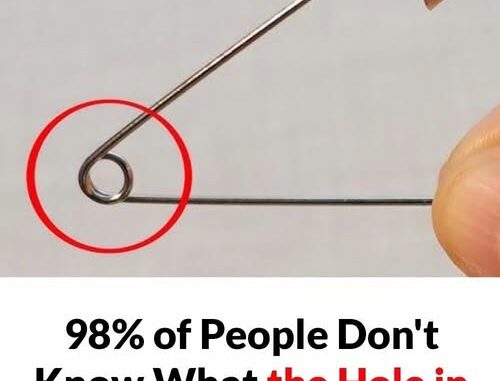
What do you think about Americans wearing safety pins to show solidarity with minorities?” I saw my girlfriend wearing a safety pin, not knowing what it was, but thinking it meant something, so I asked her about it, went online, looked up what it meant, wore one, and plan to wear one whenever I go out in the near future. Oddly enough, my girlfriend hasn’t noticed the pin or commented on it yet. MaybeTHE SECRET OF THE SAFETY PIN
– A tiny object, a vast world –
1. Born from boredom: The unexpected journey of a brilliant invention
Who would have thought that one of the simplest tools in our lives — the safety pin — was born out of boredom and debt?
In 1849, American inventor Walter Hunt was trying to find a way to pay off a small $15 debt. One idle afternoon, with a piece of brass wire in hand, he began bending and twisting it, experimenting out of sheer desperation. Within three hours, he had created what would become the first safety pin.
This invention not only helped him repay his debt, but went on to become one of the most widely-used tools of all time — a quiet genius that changed the world, yet hardly changed in design after more than 170 years.
2. Ingenious engineering behind a simple shape
The safety pin is a masterpiece of functional simplicity. It consists of a single piece of wire coiled into a spring mechanism, providing the tension needed to hold items together. One end is sharpened to pierce fabric, while the other end features a protective clasp, keeping both the pin secure and the user safe.
This clever design is why it’s called a “safety” pin — unlike straight pins or needles, it won’t accidentally stab you if used correctly.
What’s truly fascinating is that the design has remained virtually unchanged since its invention. Materials may vary (steel, brass, stainless steel), but the concept is as effective today as it was in 1849.
3. More than just a tool – A cultural and social symbol
Over time, the safety pin has become much more than a fastener:
In fashion: The punk movement in 1970s Britain turned the safety pin into a symbol of rebellion. Pinned through ripped clothing, ears, and even noses, it became an icon of resistance and nonconformity.
In entertainment and backstage: It’s the unsung hero behind many perfect looks. Stylists and stagehands have relied on safety pins to fix wardrobe malfunctions in seconds, saving countless performances.
In social movements: After hate crimes and discrimination incidents, people in the U.S. and Europe wore safety pins as a silent signal of solidarity, saying: “You are safe with me.”
In spiritual traditions: In some cultures, a safety pin is discreetly attached inside a child’s clothing to ward off evil or protect from bad luck, acting as a quiet talisman.
4. From sewing kits to survival kits – The multi-purpose marvel
Beyond households and fashion studios, the safety pin has made its way into survival kits, military packs, and backpacks of adventurers — for good reason:
It can be used to fish, remove splinters, create hooks, repair torn clothing, or even build makeshift tools.
In emergencies, it can substitute as a button, zipper pull, medical clip, or even an improvised suture pin.
Because of its size, strength, and versatility, the safety pin is a must-have in both urban and wild settings.
5. A lesson in creativity and hidden value
The story of the safety pin teaches us powerful lessons:
Innovation doesn’t require big things — it can begin with a small idea and a piece of wire.
True value lies not in size or glamour, but in problem-solving, usability, and lasting relevance.
And sometimes, it’s the smallest tools that walk with us the longest — always there, quietly helpful, never demanding attention.
Conclusion: The safety pin – Silent, small, yet irreplaceable
If someone asked: “What is the smallest but most useful item in your bag?”, the answer could very well be the safety pin.
It’s not just a tool — it’s a symbol of human ingenuity, quiet care, and timeless utility.
she hasn’t seen it, and that’s okay.